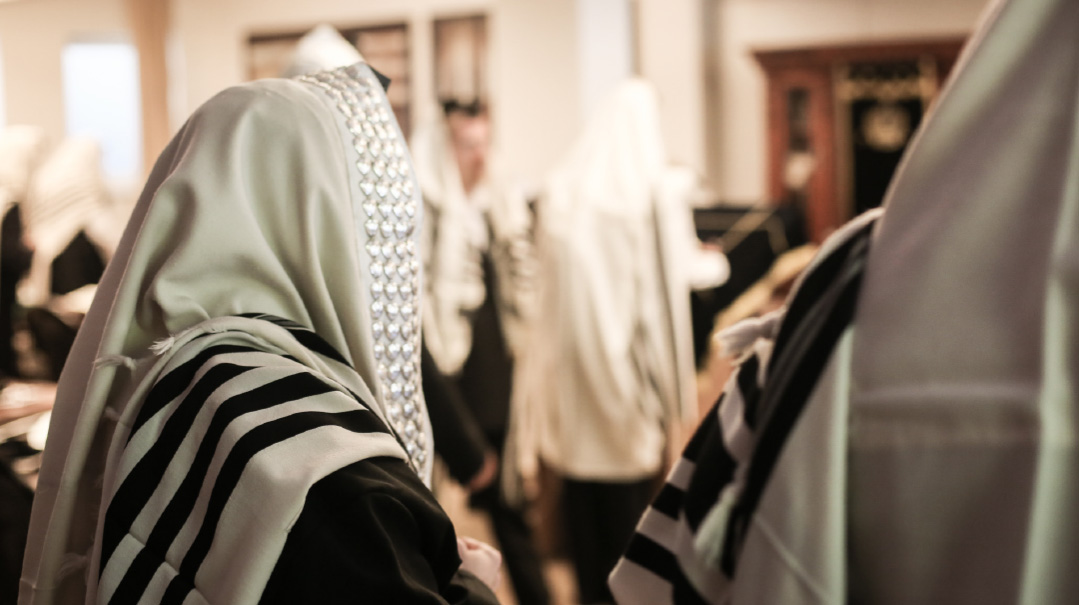Set Your Own Terms
| September 26, 2023Succos is the zeman simchaseinu, the Days of Joy. The contrast seems abrupt and jarring — why the sudden shift in mood?
S
uccos comes on the heels of an intense forty days dedicated to the avodah of teshuvah. In contrast to the solemnity that characterizes these days, however, Succos is the zeman simchaseinu, the Days of Joy. The contrast seems abrupt and jarring — why the sudden shift in mood? What happened to the serious attitude we were growing accustomed to?
The mysteries of Succos extend well beyond that. For millennia, it has been the custom to spend exorbitant sums of money for a lulav and esrog. This raises the question: What is it about this mitzvah specifically that motivates us to spend so much on it? Additionally, no other mitzvah in the Torah asks us to brave the elements and sit outdoors for seven days. And then there’s the joy — why is there such an emphasis on being happy on Succos?
Before getting to the answer, let’s ask another question. The pasuk in parshas Emor commands us: “U’lakachtem lachem bayom harishon — and you shall take for yourself on the first day.” The Midrash asks, “Is this the first day? It’s the fifteenth day [of the month]!” The Midrash concludes, “Rishon l’cheshbon avonos — Succos is the first day for the calculation of sins.”
The simple understanding of the Midrash is that, upon receiving our atonement on Yom Kippur, we are entirely cleansed from sin. Between Yom Kippur and Succos, we are too busy preparing for Yom Tov to commit a sin. Thus, only on the first day of Succos does the tally of sin begin anew.
However, this is difficult to understand. Sins, as we all know, are easy to come by. The days between Yom Kippur and Succos offer ample time to commit many of them, chas v’shalom. After all, how much time does a line of lashon hara take?
That said, in what way is Succos the first day for the calculation of aveiros? And what is the Midrash’s intention in emphasizing that it is the “first day of the cheshbon of sins”? Wouldn’t it suffice to simply say it is the “first day of sins”? Each word of Chazal is filled with depth; if the Midrash chose to add the word “cheshbon,” it must for a reason.
The Chasam Sofer presents a beautiful idea that answers all of these questions.
On Rosh Hashanah and Yom Kippur, we are judged. Judgment always revolves around two aspects:
- a) the actions themselves, as to whether they were good or bad; and
- b) the context of those actions— what the setting was for those actions, and what contributing factors played a role, including personality, intent, and motivation.
This duality is known as din v’cheshbon — “judgment and calculation.” “Judgment” refers to the consideration of the sin itself, while “calculation” refers to the consideration of the sin’s context.
All actions, mitzvos and aveiros alike, can generally be classified into one of the three categories with which we serve Hashem. As we recite in Krias Shema, we are required to serve Hashem b’chol levavcha — “with all your heart”; b’chol nafshecha — “with all your soul”; and b’chol me’odecha — “with all your money.” These three areas of service pertain to both mitzvos and aveiros. Negative acts, just like positive acts, will typically demand the investment of one of these three categories.
For example, an aveirah that calls upon the emotion — to elate in frivolous actions, or celebrate illicit or illegitimate pursuits — runs directly contrary to “b’chol levavcha.” Then there are sins that require “b’chol nafshecha,” total involvement and dedication of self to the devious objective. And, as will often be the case, there’s b’chol me’odecha — aveiros that require expenditures of money for the sake of wrongdoing.
Let us close our eyes for a minute and imagine a scene playing itself out in the Heavenly Court. Our mitzvos and aveiros are being tallied, and suddenly, the satan leaps forward.
“Look at this!” he cries, “this person was involved in a terrible dispute. And he spent huge sums of money on furthering the machlokes!”
That is din. But the satan presses on with his prosecution. “The fact that he spent so much on this dispute is particularly evil, as he is someone who doesn’t spend money easily. You should see how cheap he is when it comes to spending money on a mitzvah. So for a mitzvah, he can’t part with a nickel, but for sin — he has all the money in the world!”
That is cheshbon, the assessment of the context of our actions, which can greatly exacerbate the severity of the sin itself.
The satan can play the same trump card by pointing to the things we celebrate. A Yid rejoices over a local team winning the World Series. The satan immediately surfaces. “Look how happy he is over the success of some sports team! Is that where a Jew’s heart should be?”
Here, too, the cheshbon will play a significant role. Imagine the satan pressing on: “And this is a person who isn’t easy to excite. When it came to a siyum on a masechta or an opportunity for a mitzvah, he was practically indifferent.”
The same with our choice of self-sacrifice. The satan will prosecute: “This person braved the elements for meaningless interests. He stood in the blistering sun and slept outside on a camping trip, despite the heat, humidity, and mosquitoes, and yet he wouldn’t go to shul for an hour if the shul’s climate control wasn’t perfect!”
In other words, the satan will use the instrument of cheshbon, in addition to din, in order to achieve a guilty verdict.
It’s a frightening thought.
Enter Chag HaSuccos and its trio of mitzvos.
We are commanded to rejoice on Succos — the mitzvah of simchah. We are obligated to stay in the succah for seven days, and to take arba minim. These three mitzvos, says the Chasam Sofer, correlate with the three categories of b’chol levavcha, b’chol nafshecha, and b’chol me’odecha.
The simchah of Succos is an exercise of the heart — b’chol levavcha. Sitting, sleeping, eating in the succah can be physically draining, and therefore mandate a certain amount of self-sacrifice — b’chol nafshecha. And the arba minim cost exorbitant amounts of money — b’chol me’odecha.
In this way, says the Chasam Sofer, we are gifted on Succos with the opportunity to face the satan head-on. We are given three mitzvos that encompass the three main areas of cheshbon, and by focusing on them and fulfilling them correctly, we have the ability — via those actions — to alter the cheshbon of our din.
If the satan casts us in a bad light on Yom Kippur — “Look how much money he spent on sin” — we provide Hashem with the rebuttal: “But look at the huge sum he spent… on a fruit and a branch! And he didn’t even eat it, it was for a mitzvah!”
If the satan prosecutes us for braving the elements for illegitimate, empty reasons, we empower Hashem to counter, “But he was moser nefesh to stay in his succah for a full week! He barely budged from his succah. He even slept outside for seven nights. He camped there.”
If the satan belittles us for enjoying and rejoicing in silly things, we enable Hashem to respond, “Look how happy he was with nothing on Succos — just for the sake of a mitzvah!”
For this reason, Succos is called the “rishon l’cheshbon avonos.” It is the first day we begin to counter the satan’s cheshbon of our aveiros. On Succos, we unravel the claim that we, as individuals, invest more in our aveiros than in our avodas Hashem. Now is our chance to make it clear that we are true ovdei Hashem at our core.
With this in mind, we can have a new appreciation for the mitzvos of Succos. They are truly gifts, to be utilized and cherished to the fullest.
This Chag HaSuccos, let us work on being genuinely happy. Try to push anxiety, fear, sadness, and anger aside, and try to feel true joy in being a Jew and an eved Hashem. Write your script for the cheshbon of “b’chol levavcha.”
This Succos, make your succah your home. Park there for a full week. Take a Chol Hamoed camping trip to the wilderness of your succah, and sleep there. Be truly moser nefesh for the mitzvah. Don’t let some inconvenience and discomfort discourage you. Set your own terms for the cheshbon of “b’chol nafshecha.”
And in the days before Succos — spend money on a mehudar set of daled minim. Don’t just purchase a set for $75. Do it right. Write your own script for “b’chol me’odecha.”
Rav Daniel Osher Kleinman is the rav and rosh kollel of K'hal Nachlas in Brooklyn, New York, and the author of the ten-volume Kovetz Halachos Piskei HaRav Shmuel Kamenetsky and the two-volume Sheilos U'Teshuvos Bigdei Chamudos. He also published Sheilos U'Teshuvos Gevuros Eliyahu — the teshuvos of Rav Yosef Eliyahu Henkin, among other seforim.
(Originally featured in Mishpacha, Issue 980)
Oops! We could not locate your form.







